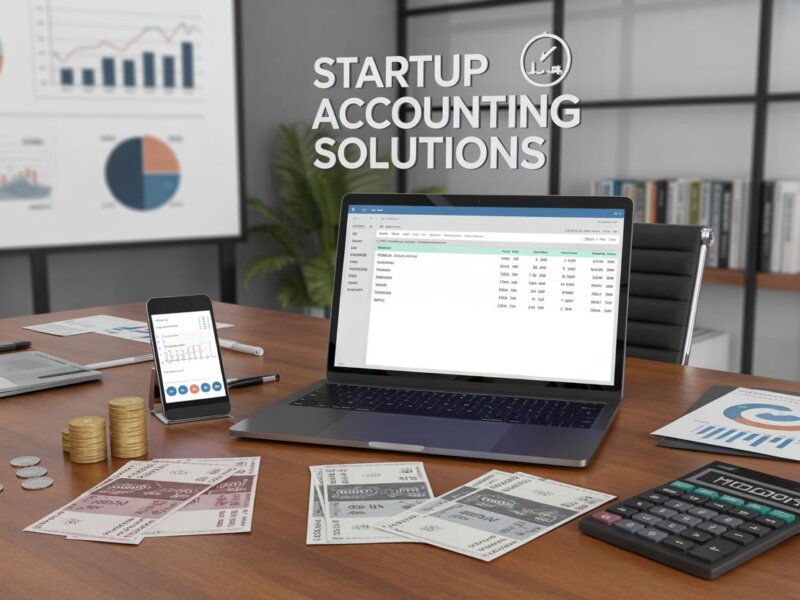## Introduction to SQL Server Performance Monitoring
In today’s fast-paced business environment, it is crucial to ensure that your accounting software is running at peak performance. One of the key components of optimizing your software’s performance is monitoring the performance of your SQL Server. SQL Server performance monitoring allows you to identify bottlenecks, optimize queries, and ensure efficient database operations. In this ultimate guide, we will explore the importance of monitoring SQL Server performance and provide you with practical tips and best practices to optimize your accounting software’s performance.
Importance of Monitoring SQL Server Performance
Monitoring SQL Server performance is essential for several reasons. Firstly, it allows you to proactively identify and address performance issues before they impact your accounting software’s functionality. By monitoring key performance metrics, you can detect and resolve bottlenecks, such as slow queries or excessive resource utilization, to ensure smooth and efficient operations.
Secondly, monitoring SQL Server performance helps you optimize your accounting software’s performance. By analyzing performance data, you can identify areas for improvement, such as inefficient queries or inadequate indexing, and make informed decisions to enhance the software’s overall performance.
Lastly, monitoring SQL Server performance enables you to ensure a positive user experience. Slow response times or system crashes can frustrate users and impact their productivity. By monitoring performance metrics, you can proactively address issues that might affect user experience, ensuring seamless operations and maximizing user satisfaction.
Key Metrics to Monitor for SQL Server Performance
To effectively monitor SQL Server performance, it is essential to track key performance metrics. These metrics provide valuable insights into the health and efficiency of your accounting software’s database. Here are some essential metrics to monitor:
1. CPU Utilization
CPU utilization measures the percentage of time the SQL Server spends executing non-idle threads. High CPU utilization can indicate resource contention or inefficient query execution. Monitoring CPU utilization helps you identify performance bottlenecks and optimize query execution to improve overall system performance.
2. Memory Usage
Monitoring memory usage is crucial to ensure optimal performance. Insufficient memory can result in disk I/O operations, slowing down query execution. On the other hand, excessive memory usage can lead to memory pressure and impact overall system performance. By tracking memory usage, you can identify any memory-related issues and take appropriate actions to optimize performance.
3. Disk I/O
Disk I/O metrics, such as average disk queue length and disk reads/writes per second, provide insights into the efficiency of data retrieval and storage operations. High disk queue length or excessive reads/writes can indicate disk bottlenecks and impact query performance. Monitoring disk I/O metrics allows you to identify and address any issues affecting the performance of your accounting software.
4. Query Execution Times
Tracking query execution times helps you identify slow-performing queries that impact overall system performance. By analyzing query execution times, you can optimize query plans, improve indexing strategies, and enhance query performance, resulting in faster response times and improved user experience.
5. Locking and Blocking
Monitoring locking and blocking metrics helps you identify contention issues that can affect concurrency and system performance. Excessive locking or blocking can lead to delays in query execution and impact user experience. By monitoring these metrics, you can detect and resolve locking and blocking issues, ensuring smooth and efficient database operations.
Tools for SQL Server Performance Monitoring
To effectively monitor SQL Server performance, you need the right tools. Fortunately, there are several excellent tools available that can help you monitor and analyze performance metrics. Here are some popular tools for SQL Server performance monitoring:
1. SQL Server Management Studio (SSMS)
SQL Server Management Studio (SSMS) is a comprehensive tool provided by Microsoft for managing and monitoring SQL Server instances. SSMS allows you to monitor performance metrics, execute queries, analyze query plans, and perform various administrative tasks. It provides a user-friendly interface for monitoring SQL Server performance and is an essential tool for database administrators.
2. SQL Server Profiler
SQL Server Profiler is a powerful tool that allows you to capture and analyze SQL Server events and performance data. It provides a graphical interface for monitoring and analyzing queries, events, and performance metrics. SQL Server Profiler enables you to identify performance issues, optimize queries, and troubleshoot problems efficiently.
3. SQL Server Dynamic Management Views (DMVs)
SQL Server Dynamic Management Views (DMVs) are a set of system views and functions that provide valuable insights into the performance of your SQL Server instances. DMVs allow you to query performance-related information, such as CPU utilization, memory usage, disk I/O, and query execution statistics. By utilizing DMVs, you can gain in-depth visibility into the performance of your accounting software’s database.
4. Third-Party Monitoring Tools
There are also various third-party monitoring tools available that offer advanced features and capabilities for SQL Server performance monitoring. These tools provide comprehensive performance monitoring, alerting, and reporting functionalities, allowing you to effectively manage and optimize your accounting software’s performance.
Setting up SQL Server Performance Monitoring
Setting up SQL Server performance monitoring requires careful planning and configuration. Here are the steps to set up SQL Server performance monitoring effectively:
1. Define Monitoring Goals and Objectives
Before starting the monitoring process, it is crucial to define your monitoring goals and objectives. Determine what performance metrics are most relevant to your accounting software’s performance and prioritize them accordingly. This step ensures that your monitoring efforts are focused and aligned with your specific requirements.
2. Configure Performance Baselines
Establishing performance baselines is essential for effectively monitoring SQL Server performance. Capture baseline performance data during normal operating conditions to identify deviations and performance anomalies. Baselines provide a reference point for comparison and help you determine whether performance metrics are within acceptable ranges.
3. Set Up Monitoring Tools
Choose the appropriate monitoring tools based on your requirements and install/configure them accordingly. Ensure that the monitoring tools are properly connected to your SQL Server instances and have the necessary permissions to collect performance data. Configure alerting mechanisms to notify you of any critical performance issues that require immediate attention.
4. Schedule Regular Performance Data Collection
To derive meaningful insights from performance monitoring, it is important to schedule regular data collection. Define a monitoring interval that suits your requirements and captures sufficient data for analysis. Regular data collection allows you to track performance trends, identify patterns, and make informed decisions to optimize your accounting software’s performance.
5. Establish Performance Reporting and Analysis
Establish a reporting and analysis process to effectively interpret and utilize the collected performance data. Develop meaningful reports and visualizations that provide insights into SQL Server performance. Regularly review performance reports and analyze the data to identify areas for improvement and drive optimization efforts.
Best Practices for SQL Server Performance Monitoring
To ensure the effectiveness of your SQL Server performance monitoring, it is important to follow best practices. Here are some recommended practices to optimize your accounting software’s performance monitoring:
1. Monitor Continuously
SQL Server performance monitoring should be a continuous and ongoing process. Monitor key performance metrics regularly to identify any performance issues or anomalies promptly. Continuous monitoring helps you proactively address issues and ensure optimal performance.
2. Set Up Alerting
Configure alerting mechanisms to receive notifications when critical performance thresholds are breached. This allows you to take immediate action and prevent any potential performance degradation or downtime. Customize alerting thresholds based on your specific requirements and business priorities.
3. Analyze Performance Data Holistically
When analyzing performance data, consider the interdependencies between different metrics. Performance issues in one area can have a cascading effect on other aspects of your accounting software’s performance. Analyzing performance data holistically provides a comprehensive understanding of the overall system performance.
4. Regularly Review and Fine-Tune Query Performance
Queries are a critical component of your accounting software’s performance. Regularly review query performance and optimize queries as needed. Ensure proper indexing, efficient query plans, and minimize unnecessary query execution. Fine-tuning query performance can significantly enhance the overall performance of your software.
5. Keep an Eye on System Resources
Monitor the utilization of system resources, such as CPU, memory, and disk I/O, to ensure optimal performance. Identify any resource bottlenecks and take appropriate actions to alleviate them. Regularly review system resource utilization to identify any potential issues that might impact your accounting software’s performance.
Troubleshooting Common Performance Issues in SQL Server
Despite implementing effective monitoring practices, performance issues can still arise. Here are some common performance issues in SQL Server and tips to troubleshoot them:
1. Slow Query Performance
Slow query performance can significantly impact your accounting software’s performance. To troubleshoot slow queries, analyze query execution plans, identify missing or inefficient indexes, and consider query optimization techniques, such as rewriting queries or using query hints. Additionally, ensure that statistics are up-to-date to enable the query optimizer to make informed decisions.
2. High CPU Utilization
High CPU utilization can indicate inefficient query execution or resource contention. To troubleshoot high CPU utilization, identify resource-intensive queries and optimize them. Consider indexing strategies, query plan optimization, or query tuning techniques to reduce CPU usage. Additionally, identify any external processes or applications that might be consuming excessive CPU resources.
3. Memory Pressure
Memory pressure can lead to excessive disk I/O, impacting overall system performance. To troubleshoot memory pressure, analyze memory usage patterns, identify memory-intensive queries, and optimize them. Consider increasing the available memory or adjusting SQL Server’s memory configuration settings. Ensure that the operating system and other applications are not consuming excessive memory resources.
4. Disk Bottlenecks
Disk bottlenecks can result in slow response times and delayed query execution. To troubleshoot disk bottlenecks, identify queries with high disk I/O, optimize indexing strategies, and consider distributing data across multiple disks or implementing disk subsystem enhancements. Ensure that disk drives are properly configured and have sufficient capacity to handle the workload.
5. Locking and Blocking
Excessive locking and blocking can impact concurrency and system performance. To troubleshoot locking and blocking issues, identify queries or transactions causing contention and optimize them. Consider adjusting isolation levels, implementing row versioning, or utilizing other concurrency control techniques. Additionally, ensure that database design and indexing are optimized to minimize locking and blocking.
How to Interpret and Analyze SQL Server Performance Data
Interpreting and analyzing SQL Server performance data is crucial for optimizing your accounting software’s performance. Here are some steps to effectively interpret and analyze performance data:
1. Collect Relevant Performance Data
Collect performance data by monitoring key metrics, such as CPU utilization, memory usage, disk I/O, and query execution times. Ensure that the collected data covers an adequate time period and captures a representative workload.
2. Analyze Performance Trends
Analyze performance trends by reviewing historical data and identifying patterns or deviations. Look for trends that indicate performance improvements or degradation. Identify any anomalies or spikes that might require further investigation.
3. Compare Against Baselines
Compare performance data against established baselines to identify deviations and anomalies. Evaluate performance metrics against baseline values to determine whether they are within acceptable ranges. Deviations from baselines can indicate potential performance issues that require attention.
4. Identify Performance Bottlenecks
Identify performance bottlenecks by analyzing performance metrics in relation to each other. Look for correlations and dependencies between different metrics to pinpoint areas of concern. For example, high CPU utilization and excessive disk I/O might indicate a query performance issue.
5. Drill Down into Detailed Analysis
Drill down into detailed analysis by examining query execution plans, indexing strategies, and other relevant factors. Identify specific queries or transactions that contribute to performance issues. Analyze query execution times, CPU usage, and disk I/O patterns to gain insights into query performance.
Optimizing SQL Server Performance Based on Monitoring Insights
Optimizing SQL Server performance based on monitoring insights is a continuous and iterative process. Here are some strategies to optimize your accounting software’s performance:
1. Query Optimization
Optimize queries by analyzing query execution plans, indexing strategies, and query performance data. Identify slow-performing queries and optimize them through query plan improvements, index optimizations, or query rewriting. Regularly review and fine-tune queries to ensure optimal performance.
2. Index Optimization
Optimize indexing strategies to enhance query performance. Analyze query execution plans and identify missing or inefficient indexes. Create or modify indexes to improve query execution times. Regularly review and maintain indexes to ensure optimal performance.
3. Database Maintenance
Perform regular database maintenance tasks, such as updating statistics, rebuilding indexes, and managing database fragmentation. Regular maintenance helps improve query performance, optimize disk I/O, and ensure efficient database operations.
4. Hardware and Resource Optimization
Evaluate hardware and resource configurations to ensure optimal performance. Consider increasing memory capacity, upgrading CPU resources, or optimizing disk subsystems. Regularly monitor resource utilization and adjust configurations based on workload requirements.
5. Regular Performance Testing
Regularly conduct performance testing to evaluate the impact of optimizations and changes. Use realistic test scenarios to simulate production workloads and measure performance metrics. Performance testing helps validate optimizations and ensures that your accounting software performs optimally under various conditions.
Conclusion and Recommendations for Ongoing SQL Server Performance Monitoring
Optimizing your accounting software’s performance is a continuous effort that requires proactive monitoring and analysis. By monitoring key performance metrics, using the right tools, and following best practices, you can identify and address performance issues, optimize queries, and ensure efficient database operations.
Regularly collect and analyze performance data to gain insights into your SQL Server’s health and efficiency. Interpret performance metrics, compare against baselines, and identify performance bottlenecks. Based on monitoring insights, optimize queries, fine-tune indexes, and perform regular database maintenance.
Remember that SQL Server performance monitoring is an ongoing process. Continuously monitor performance, set up alerting mechanisms, and regularly review and optimize queries to ensure optimal performance for your accounting software. By following these recommendations and implementing a robust performance monitoring strategy, you can optimize your accounting software’s performance and provide a seamless experience to your users.
Implement these strategies and optimize your accounting software’s performance with effective SQL Server performance monitoring.
CTA: Contact us today to learn more about how our SQL Server performance monitoring services can help optimize your accounting software’s performance.


